ABOUT FRAMING
All the stuff you need to know about framing to get the very best result.
All the stuff you need to know about CUStOM FRAMING:
Click the links in this list to skip to each section and learn more about the art and science of custom framing.
STUFF ABOUT MATS
Mat boards or more simply "mats", sit in between your image and picture frame and the glass. They help display the image but also keep the image in the correct place and provide a space for air circulation. Mats allow moisture in the atmosphere to be absorbed and released slowly and allow paper or the object to naturally expand and contract with changes in temperature and humidity. Artwork is also kept away from direct contact with the glass, very important in the case of photo emulsion and pastels which can adhere to glass causing irreversible damage.
Firstly mats are comprised of layers of paper laminated together. The top papers and core of mats are made from either unpurified wood pulp, purified alpha cellulose wood pulp or cotton linter pulp (from the husk of a cotton seed). The primary constituent of most paper is cellulose fibre sourced from plant material. The longest and strongest of cellulose fibres which make for the best structure and longevity are "alpha" cellulose. If not removed in the pulping process, lignin (wood pulp), waxes and other non cellulose components break down, especially in the presence of ultra violet (UV) light and moisture, releasing those unwanted acidic by products.
There are many grades of mat. If possible, an acid free mat is the best choice. The discolouration often seen as a stained looking mat with a brown bevel is a good indication of an acidic mat and is referred to as "acid burn". Your art will also turn brown and become brittle over time.
"Acid free" can be a very loose term. Not all mats are created equal and it is useful to know what you are getting for your dollar. The mat may only have an acid free coating or be acid free at the point of manufacture! Often buffering agents such as calcium carbonate (chalk) are placed in the pulp, but when the buffering agent is saturated, the acidification process continues.
Decorator grade boards are made with lower grade wood pulp with short fibres and may only be acid free at the point of manufacture. These are often called white core boards. The dye based surface papers are often not colour fast and along with plastic frames and nylon cords, make supermarket and chain store frames a recipe for disaster. These boards are not suitable for long term framing.
Conservation grade boards use alpha-cellulose pulp and are buffered with calcium carbonate or aluminium silicates to ensure protection from the destructive effects of acid migration from the matted work (sometimes the art paper is not acid free either!) and from pollution in the environment. These boards meet the minimum requirement for long term framing without harming the artwork.
Museum grade boards with the longest and cleanest alpha cellulose fibres and cotton rag board (made from the husks of the cotton seed) are the safest board. Museums and galleries will only use 100% rag mats.
Finally, a quick note on foam core. Most foam core has an acid free coating. However, only archival foam board has an acid free core as well.
Got some questions about mats? Get in touch
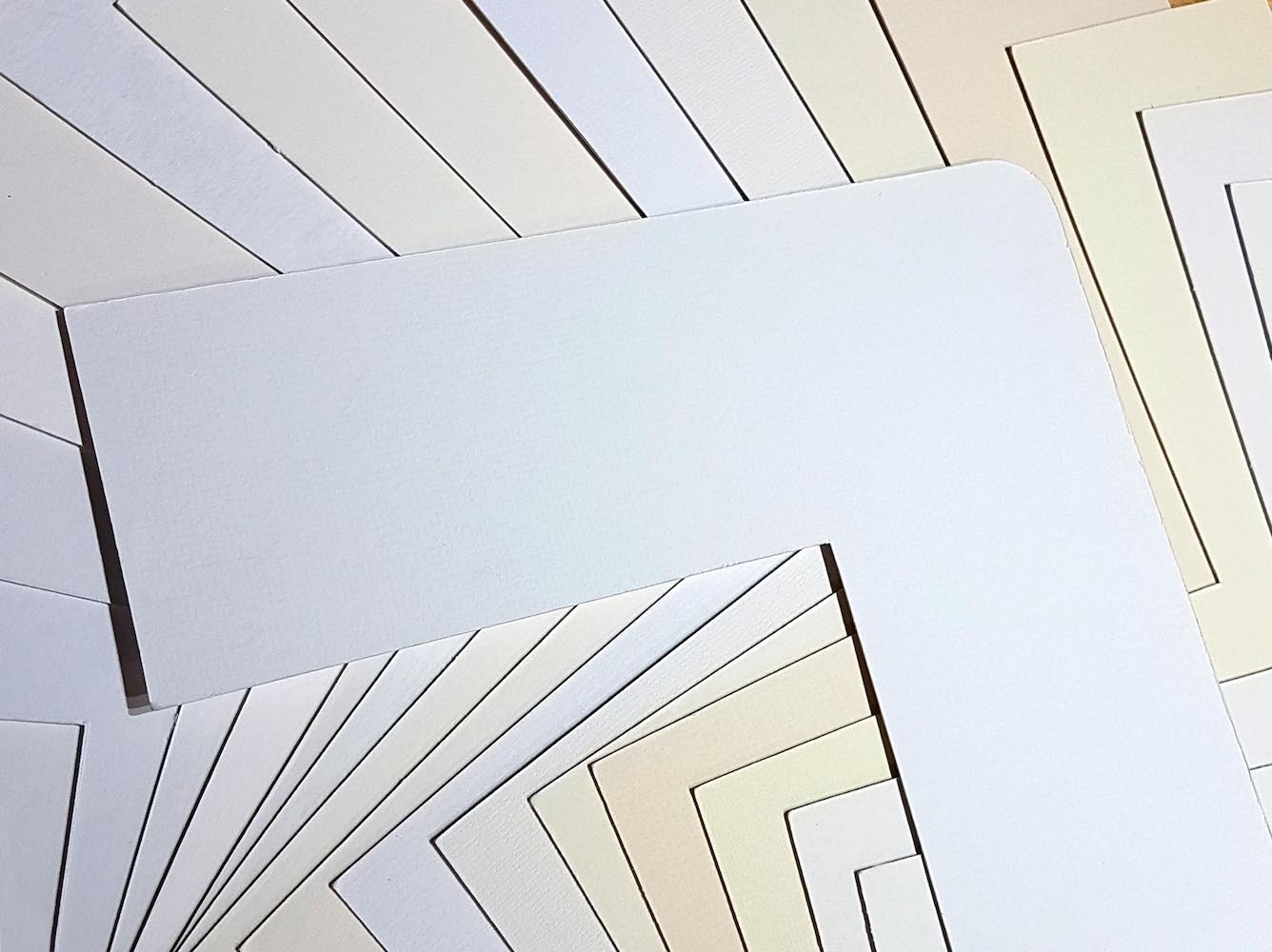
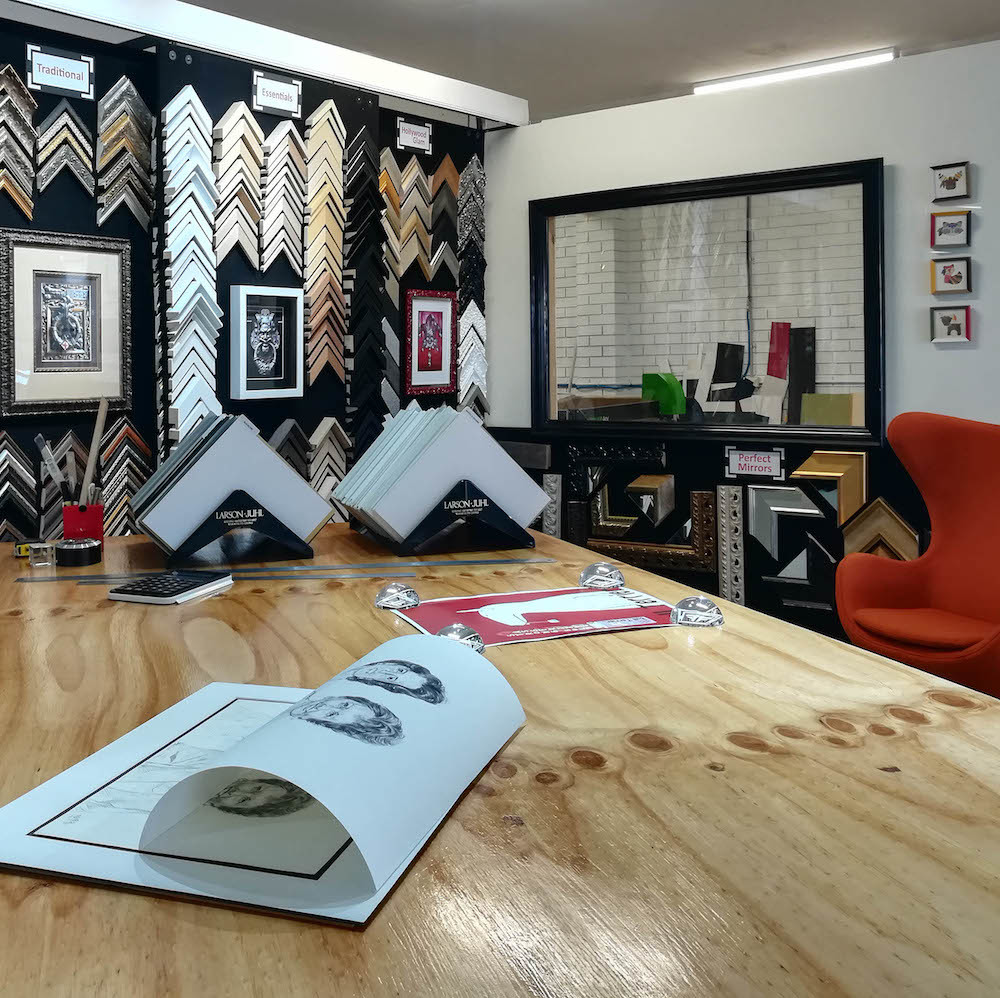
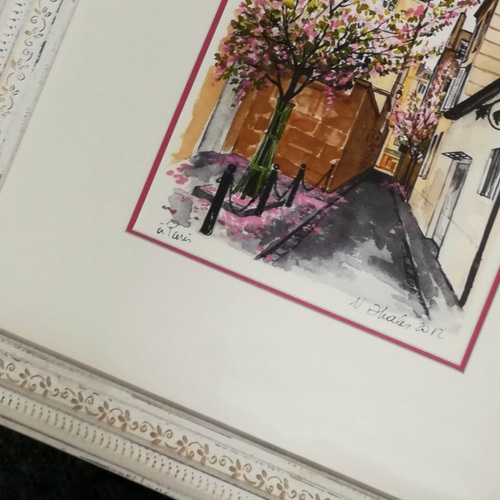
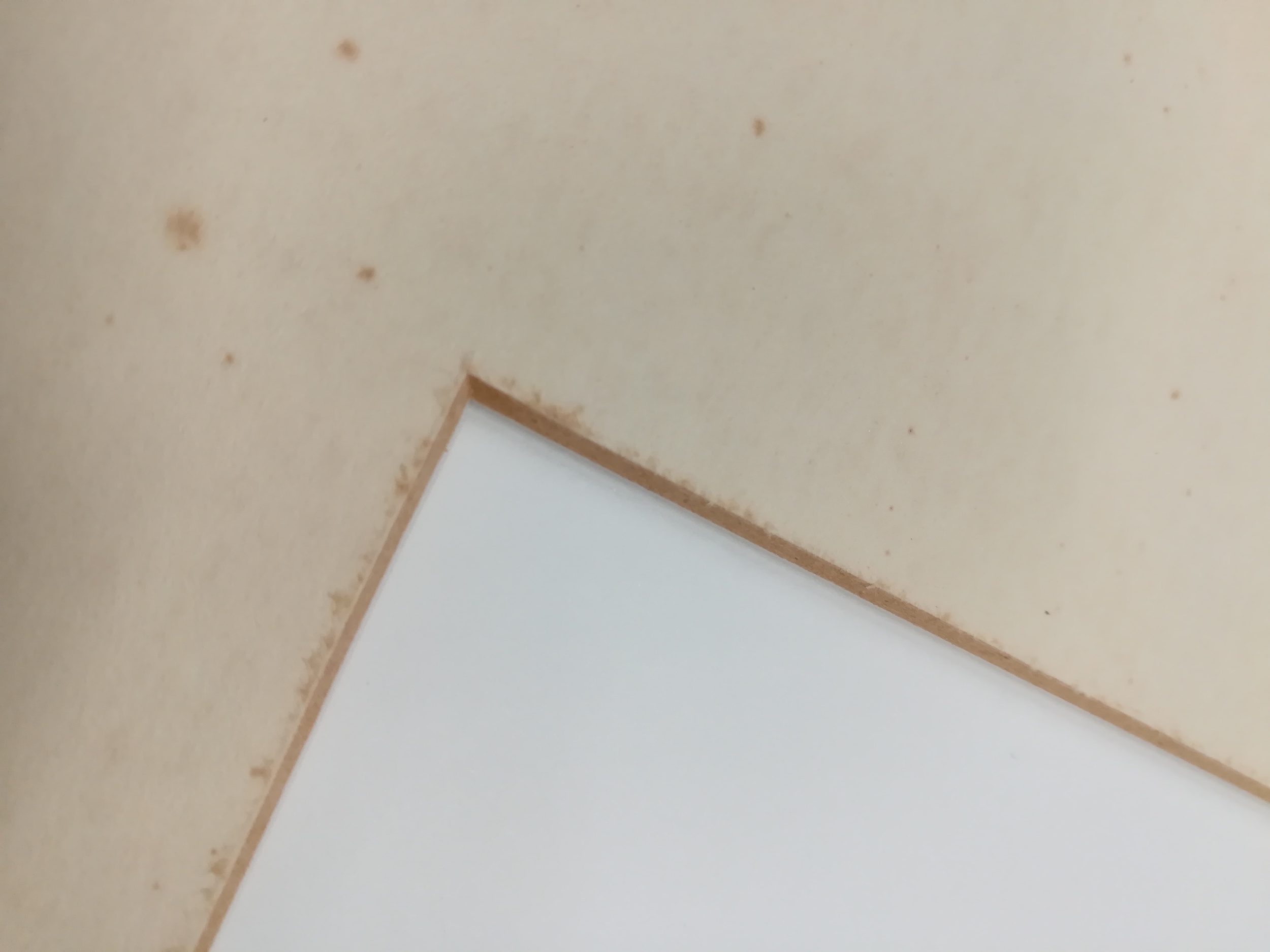
Example of acid burn on a mat bevel
STUFF ABOUT MOULDINGS
Good quality wooden frames are usually made from ash or pine from sustainable plantations and may go through 10 or more processes to achieve the colour, texture and profile that you see in the corner samples.
A wooden moulding is finger jointed about every ½ a metre. This minimises warping that can occur with different temperatures and humidity.
Some of the top quality Italian mouldings are manufactured from olive wood and some gold frames have 22k gold gilt hand applied.
Frames are joined with a purpose designed v shaped nail. The placement, number and size of the nails is different for every moulding.
Frames bought at discount stores are often synthetic, which means they have reduced lifespan and reduce the lifespan of the contents. The strongest part of these frames is sometimes the glass!
Got some questions about mouldings? Get in touch
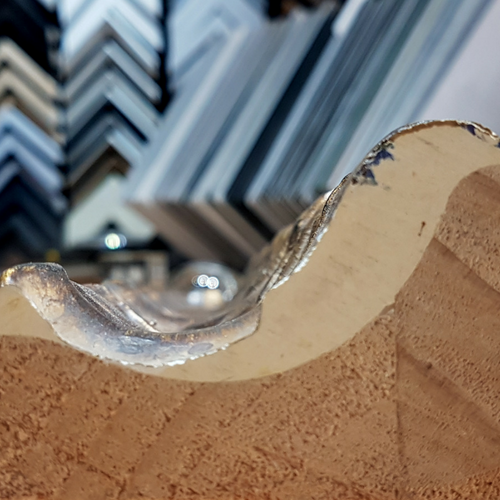
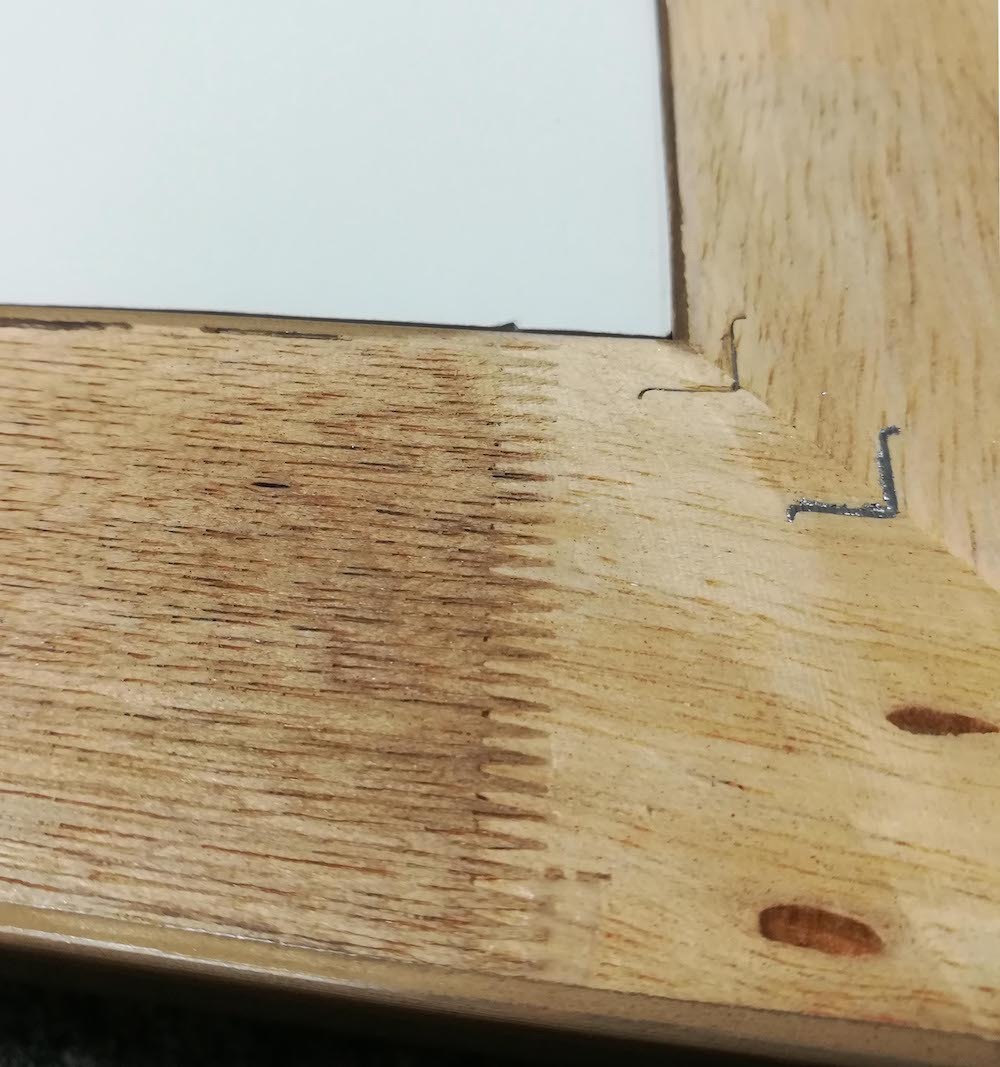
STUFF ABOUT GLAZING
There are many decisions to make when framing artwork. Just as there are many types of mats, there are many types of glass. The more you know about conservation and the environmental hazards which threaten your artwork, the better you will be able to protect it.
Glass protects artwork from environmental hazards: Light, pollutants, pests, moisture. These all conspire to damage your art but glazing can alleviate or even eliminate some of these hazards.
Light
Light can cause brittleness and discolouration of paper and pigments. Ultraviolet radiation (which we know as UV light) is the invisible short wave component of light which is most destructive to paper. UV strikes art surfaces directly or by reflection. Its major sources are natural daylight and fluorescent lighting.
Why is it damaging? Papers containing lignin, waxes, plasticizers, sulphur, iron or other non-cellulose products will quickly deteriorate with exposure to light. The purest of papers and pigments can still bleach or discolour with exposure to light.
How can you prevent this? To avoid damage from light, try to hang artworks out of direct sunlight or fluorescent lights.
If this is not possible, it is important to choose the correct glazing with ultra violet filters. Museum grade glass is the highest quality of glass which has an invisible coating on the inside, which blocks about 99% of harmful UV, compared to the approximately 40%-50% blocked by plain glass. UV-filtering glass and acrylics come in various grades of protection from 50-99%. Non-glare, or anti-reflective glass has either a special coating, or has been chemically treated, so that the outer side of the glass scatters the reflected light in a room, giving a softer reflection. Anti-reflective type glazing does not protect artwork and many believe it causes more damage than even plain glass.
As you can’t be sure where your artwork will be hung in the future and what value will be placed on it by your descendants, it is recommended to ere on the side of caution.
Moisture
Most artworks should be put under glass, as water in the atmosphere can come into direct contact with exposed surfaces causing buckling and warping, and in combination with other air pollutants can provide conditions that allow mould to grow. One of the dangers of moisture, other than just wetting art and ruining the media, is its potential to combine with iron and sulphate ions in the paper or atmosphere, resulting in the formation of sulphuric acid. The acid causes embrittlement and discolouration of papers and other fibres.
NOTE: Oil paintings on canvas are usually not glazed, A greasy film appears on the inside of the glass. Professional cleaning may be needed if an oil is glazed to protect it from a fire place for example.
Air Pollution
Air pollutants included dust and mould spores, fibres and chemicals. Airborne grease, smoke particulates and dust cause staining over time on exposed artwork. Smoke and cooking grease can stain paintings or artwork quite quickly and permanently. If left exposed artworks made of natural fibres can also provide a haven for pests and will deteriorate very quickly.
Sealing an artwork off from the surrounding air can prevent most of these problems
Got some questions about glazing? Get in touch
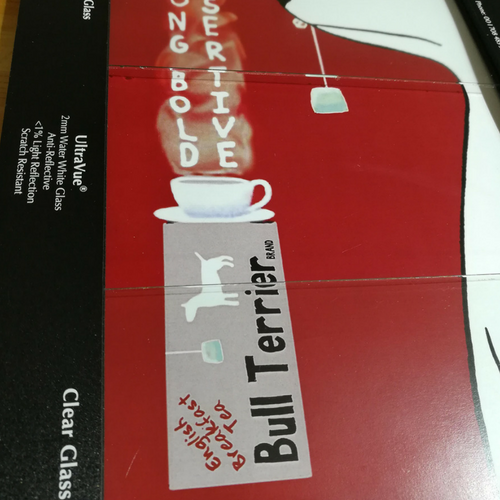
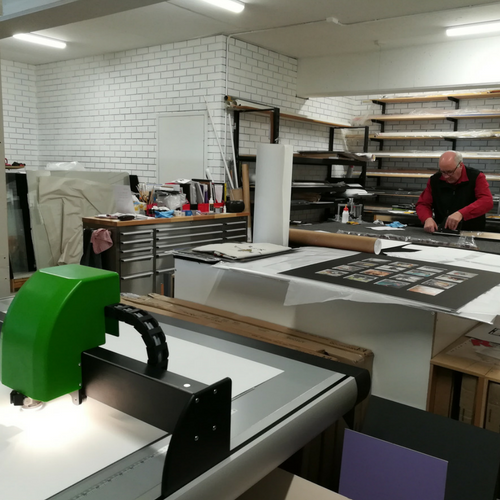
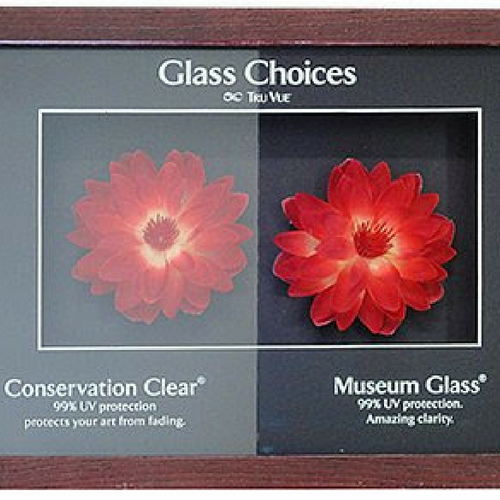
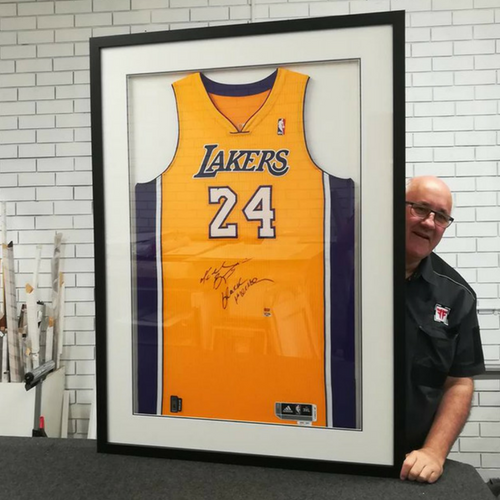
STUFF ABOUT HARDWARE
Artworks, including memorabilia and priceless heirlooms, can be accidentally damaged due to poor storage and handling, but also due to the failure of hanging hardware.
We use quality stainless steel coated wires. We use wire gauges appropriate for different weight frames. D rings are screwed into the frames and the wire is attached in a particular way that ensures it does not slip.
A note on string, nylon cord and fishing line stapled to the frame.
We have all done it, bought a discount frame on a whim and put your certificate or photo inside as best you can. In a few years or less the nylon cord disintegrates and your art lands on the floor with a crash. The frame is weakened and luckily this time the glass did not break! You quickly replace the cord with a bit of fishing line and again the line breaks near the hook and your piece lands on the floor breaking the frame and the glass and scratching your piece. We can help with that, by reframing and replacing that glass and fishing line.
We can sell you stainless steel wire packages and show you the best place and way to attach these to a frame.
We always use a dust jackets or tape at the back of your frame to stop pollutants and pests from getting in the frame.
The bumpers attached on the back of your frame not only keep the frame away from the wall to prevent scratching, they allow for air circulation behind reducing the chances of mould growth.
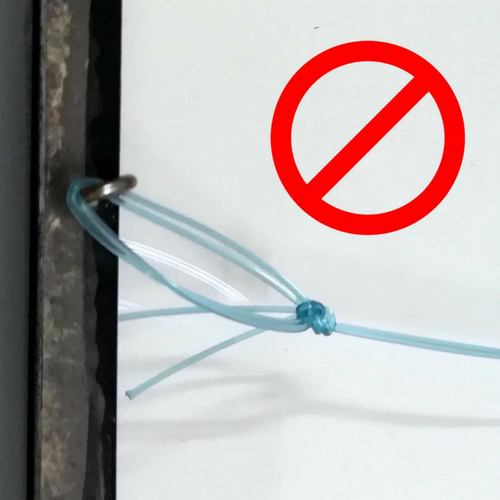
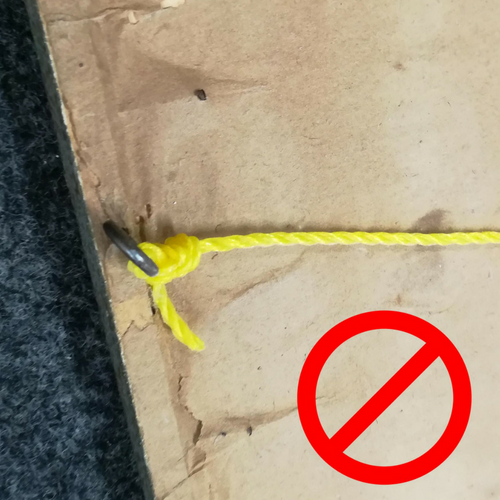
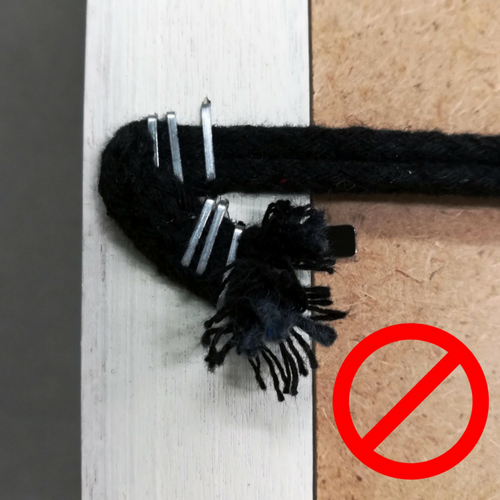
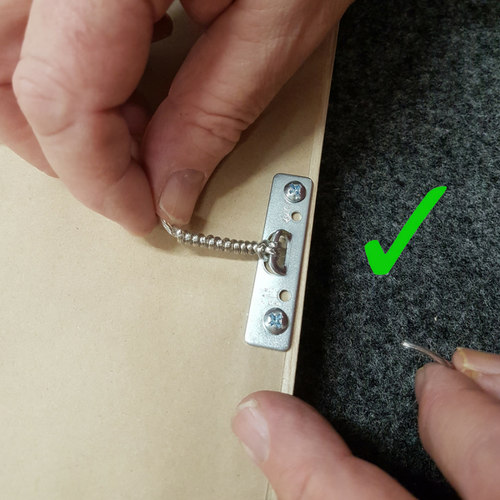
Got some questions about hardware? Get in touch
